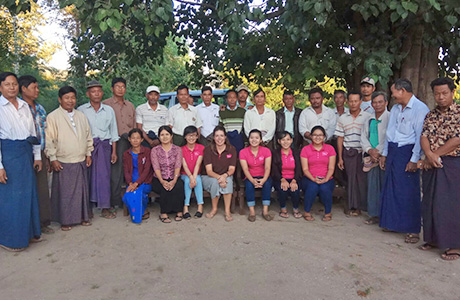Fresh Studio is commissioned to analyze several reduced-input value chains in several GMS countries including Myanmar.
In the last week of November 2017, Fresh Studio Vietnam and Myanmar conducted a value chain analysis of GAP certified mango in Mandalay and Sagaing region in Myanmar. Besides analysing the mango chain in Myanmar, two other chains are being analysed as part of this assignment: coconut in Vietnam and vegetables in Thailand.
The research is part of a program, which enhances market access for sustainable environmentally friendly and safe agricultural produce using reduced chemicals. A key objective of the program is to identify opportunities and approaches to improve the competitiveness of high value fruit chains.
Only recently Myanmar started to develop GAP standards, mango is one of the first 14 products to receive a GAP standard/guideline/protocol. Myanmar produces a unique mango variety called Sein Ta Lone (‘one diamond’) and has a special flavour well adapted in the Mandalay region, Myanmar. Within the analysis a closer look was given to GAP certified mango growers and particular GAP certified Sein Ta Lone growers.
With a multi-disciplinary team consisting out of 9 members the intensive field work week focused on GAP mango supply chain actors including input suppliers, farmers (GAP and non-GAP), collectors, wholesalers, processors, exporters and policy makers. The teams collected the information through various RDA-techniques: focus group discussions, production calendar, gross margin analysis, in-depth interviews, time-lines etc. Within the teams there was a different focus on stakeholders.
The largest share of mango production is traded as fresh fruit both for export and domestic market; the remainder is mostly processed into dried and frozen mango, puree and leather. The largest portion of mango goes to China through border trade and 1st grade mangoes go to Singapore. For Sein Ta Lone (GAP) it is still challenging to get premium price. The major challenges include weak institutional linkages together with low capacities between and within the different stakeholders along the value chain and the mango-demand outside Myanmar is not requesting a Myanmar GAP-standard.




